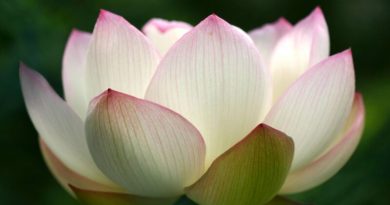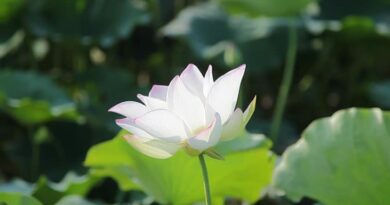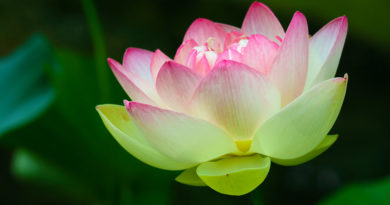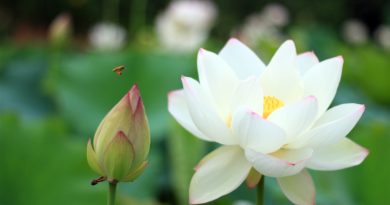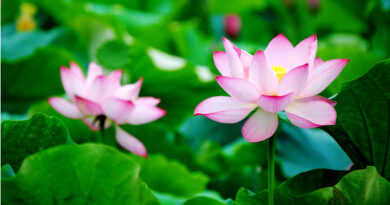Answers By Mr. S. N. Goenka: Other Techniques
-Can we combine two or more meditation techniques?
Mr. S. N. Goenka: You can combine as many techniques as you like, but don’t combine them with Vipassana. Vipassana is unique technique, and combining it with anything else will not help you. It may even harm you. Keep Vipassana pure. Other techniques only give a veneer to the surface of the mind. But Vipassana makes a deep surgical operation; it takes out complexes from the depth of the mind. If you combine it with any other technique, you are playing a game which may be very harmful to you.
-Why is it harmful to mix techniques?
Mr. S. N. Goenka: Every rite, ritual or ceremony is nothing but a corrupt form of pure Dhamma. If people keep this corrupt thing along with the purity of Vipassana, the rituals will again become predominant in their mind, “That is more important. I am a traditional Jain, Hindu, Buddhist, so that must be there.” They can’t get the real benefit of Vipassana.
Another reason is that from one enlightened person to another there is a big gap. During that gap the technique disappears, but the words somehow remain, though the real meaning is lost. And without practice even pure Dhamma taught by an enlightened person will slowly become a sect.
For the head of a sect, the number of followers is important and the aim is to increase this number. Whether people get real benefit or not is unimportant to him. If one of the followers asks for a technique, he will explain the words that remain in his own way, and give a technique without understanding the real meaning of those words. His wish is to keep the followers happy within his sect. And now that starts and people get very attached, “This is given by our wonderful ācariya who is definitely in contact with an enlightened person, so what he says is perfectly all right.”
Dhamma becomes polluted because things are started by these people who know nothing of how to purify the mind at the depth. They find some formula here or there, and start these things. If these are added to Vipassana it will get polluted. Then the efficacy of this pure Dhamma will definitely be lost.
Now what will be added? If somebody wants to calm the mind, he will be told, “All right, you’d better recite this word.” And the word given is the name of the one who started this particular sect, “…because he is an enlightened person.” So every sect will repeat a particular name. Now, one becomes calm because this word is repeated. They think, “Ah, our tradition is wonderful. It gives such peace.” But they have missed the real essence of Dhamma.
What is Dhamma? The purpose is to come out of the wheel, the process of birth and death. Every time you generate a sankhāra by reacting to a pleasant or unpleasant sensation, you are giving a push to this wheel. If you don’t reach that place where craving and aversion originate and instead you work at the surface level, then the process of multiplying your misery, your craving and aversion, goes on. When you recite a word only the surface level of your mind is reciting. Deep inside the whole process is the same.
Now if you add this to Vipassana, what happens? Every word has its own vibration, and if you keep on reciting the same word your entire body gets engulfed in the vibration that you have created. It is good at the surface level; it works like a shield so that no bad vibration can enter. But you have forgotten to work with your own vibration.
The technique of Vipassana is to change the habit pattern at the deepest level of the mind. When you are repeating a word you are not changing the habit pattern, because you don’t know what vibrations there are when something is either pleasant or unpleasant. You don’t know how you are reacting to the natural vibrations which keep on working deep inside your body and mind. You have just put up a good shield of created, artificial vibrations. You have created a hindrance for yourself.
What other kinds of pollution are there? You can sit down and imagine something, and your mind gets concentrated with this image. Now how will you reach the stage where you observe craving and aversion arising at the deepest level? You have diverted your conscious mind to an imagined object, and forgotten all about your unconscious mind.
There is another difficulty: The whole technique is to examine the reality within yourself by disintegrating the entire mind-and-matter phenomenon. Only then can you reach the stage which is beyond mind and matter. And now you are creating another illusion, an imaginary shape which is integrated, and you don’t do anything to disintegrate this. How can you come out of ignorance? All this integrated reality is ignorance, it makes you feel that this is “I, mine.” Only when that gets disintegrated and dissolved can you understand it is all subatomic particles, wavelets, vibrations. When you reach that stage you find that the entire mind-matter structure is essenceless.
So those who understand Dhamma properly must be careful. You should not add anything simply to please the followers of traditional beliefs or philosophies.
The Dhamma is so complete; there is nothing to add—kevalam paripunnam. It is parisuddham, that is, there is no question of taking out anything. Keep it paripunnaand parisuddha and you will get all the benefits.
-What do you think about self improvement by mind programming, by self hypnotizing?
Mr. S. N. Goenka: Well, hypnotizing is hypnotizing. It may benefit you for a short time, but the habit pattern of the mind at the deepest level remains as it is. You have to change the depth of the mind, the root of the mind. The habit pattern of the mind should be changed totally and for that one has to work at the root level. Vipassana works at the root level.
Source: https://www.vridhamma.org


